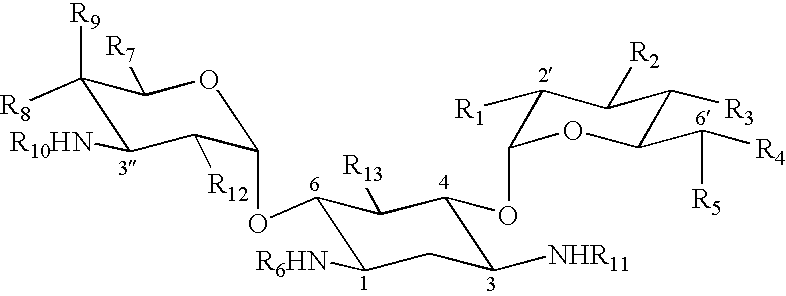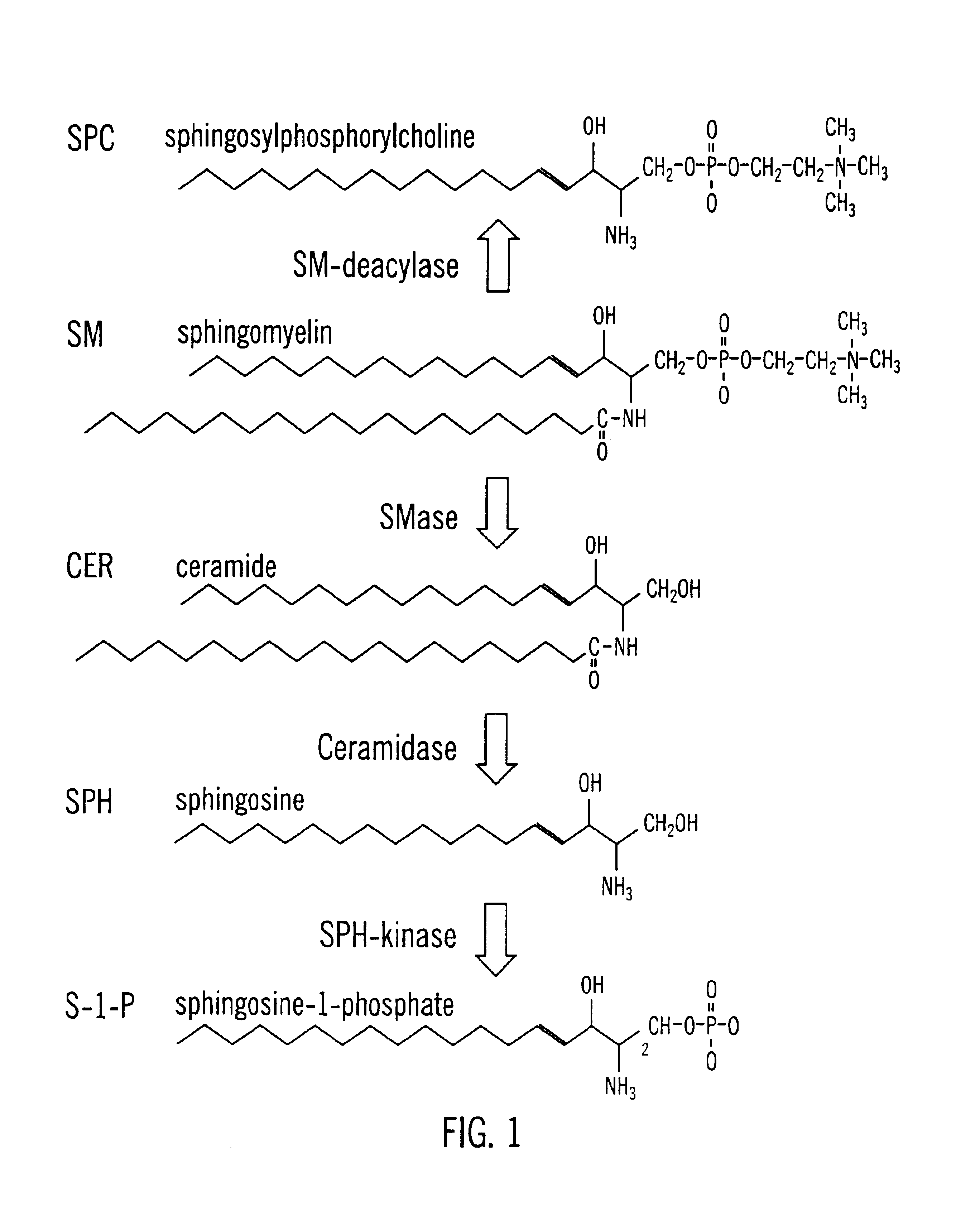Compositions and methods for the treatment and prevention of cardiovascular diseases and disorders, and for identifying agents therapeutic therefor
a technology for cardiovascular diseases and disorders, applied in the field of cardiovascular diseases and cerebrovascular diseases, and for identifying agents therapeutic therefor, can solve the problems of acute myocardial infarction (ami) and sudden cardiac death, and achieve the effects of reducing the level of serum cholesterol, and reducing the flow of blood to the organs
- Summary
- Abstract
- Description
- Claims
- Application Information
AI Technical Summary
Benefits of technology
Problems solved by technology
Method used
Image
Examples
example 1
Sphingosine Production in Rabbits Increases in Cardiac Ischemia
[0277]Tissue levels of sphingosine (SPH) in adult rabbit hearts under various conditions were determined as follows. Rabbits were subjected to retrograde coronary perfusion with hypoxic (low oxygen) conditions (i.e., 95% CO2; 5% O2) or normal Kreb's buffers (equilibrated with 95% O2; 5% CO2). The rabbits were sacrificed, and hearts were removed and quickly homogenized. Sphingolipids were extracted from homogenates using protocols essentially as described by Sabbadini et al., Biochem. Biophys. Res. Comm. 193:752-758, 1993. HPLC analysis of the extracted lipids revealed significant increases in tissue SPH levels for hearts perfused with CO2 when compared to hearts exposed to control conditions (20-fold, p<0.001). These increases occurred after only 5 minutes of hypoxia.
example 2
Sphingosine Production in Humans
[0278]Serum levels of SPH levels in human patients experiencing cardiac ischemia were examined as follows. Serum samples were taken from patients presenting themselves to the emergency department of the Naval Medical Center of San Diego using strict human subjects protocols. Sphingolipids in the blood samples were extracted and analyzed as described above. Patients with confirmed myocardial ischemia had significantly higher SPH levels than any of the control groups.
[0279]Serum SPH levels in six “well-conditioned athletes” were combined as one control group. These subjects were Navy special forces (Navy Seals) and Olympic athletes from the Olympic Training Center who were exercised to exhaustion on treadmills at 49° C. In the case of the Olympic athletes, individuals at rest were also evaluated. The well-conditioned athletic control group had serum SPH levels of 4.18±1.8 pmol / mL, ranging from the lower limit of detection (5 pmol / mL) to 16.4 pmol / mL.
[02...
example 3
Hypoxic Effects on the Sphingomylein Signal Transduction Cascade
[0283]TNFα, acting via TNFα receptors, has been shown to utilize the sphingomyelin signal transduction cascade in cardiomyocytes (Oral et al., J. Biol. Chem. 272:4836-4842, 1997; Krown et al., J. Clin. Invest. 98:2854-2865, 1996). The following experiments were carried out in order to determine if this signaling system could also be activated by hypoxia, and if sphingolipids were produced before cell death as is the case for TNFα, as described in the Detailed Description of the Invention.
[0284]Adult rat cardiomyocytes were subjected to hypoxic conditions as described above and assayed for their ability to produce sphingolipid bases involved in the sphingomyelin signal transduction cascade.
[0285]Cardiomyocytes were cultured on plastic dishes that were placed in a humidified modular incubator chamber (ICN Biomedicals, Aurora, Ohio) pressurized to 0.04-0.05 psi by the particular gas mixture used in the treatment. Warm (37°...
PUM
| Property | Measurement | Unit |
|---|---|---|
| molecular weight | aaaaa | aaaaa |
| molecular weight | aaaaa | aaaaa |
| molecular weight | aaaaa | aaaaa |
Abstract
Description
Claims
Application Information
 Login to View More
Login to View More - R&D
- Intellectual Property
- Life Sciences
- Materials
- Tech Scout
- Unparalleled Data Quality
- Higher Quality Content
- 60% Fewer Hallucinations
Browse by: Latest US Patents, China's latest patents, Technical Efficacy Thesaurus, Application Domain, Technology Topic, Popular Technical Reports.
© 2025 PatSnap. All rights reserved.Legal|Privacy policy|Modern Slavery Act Transparency Statement|Sitemap|About US| Contact US: help@patsnap.com



